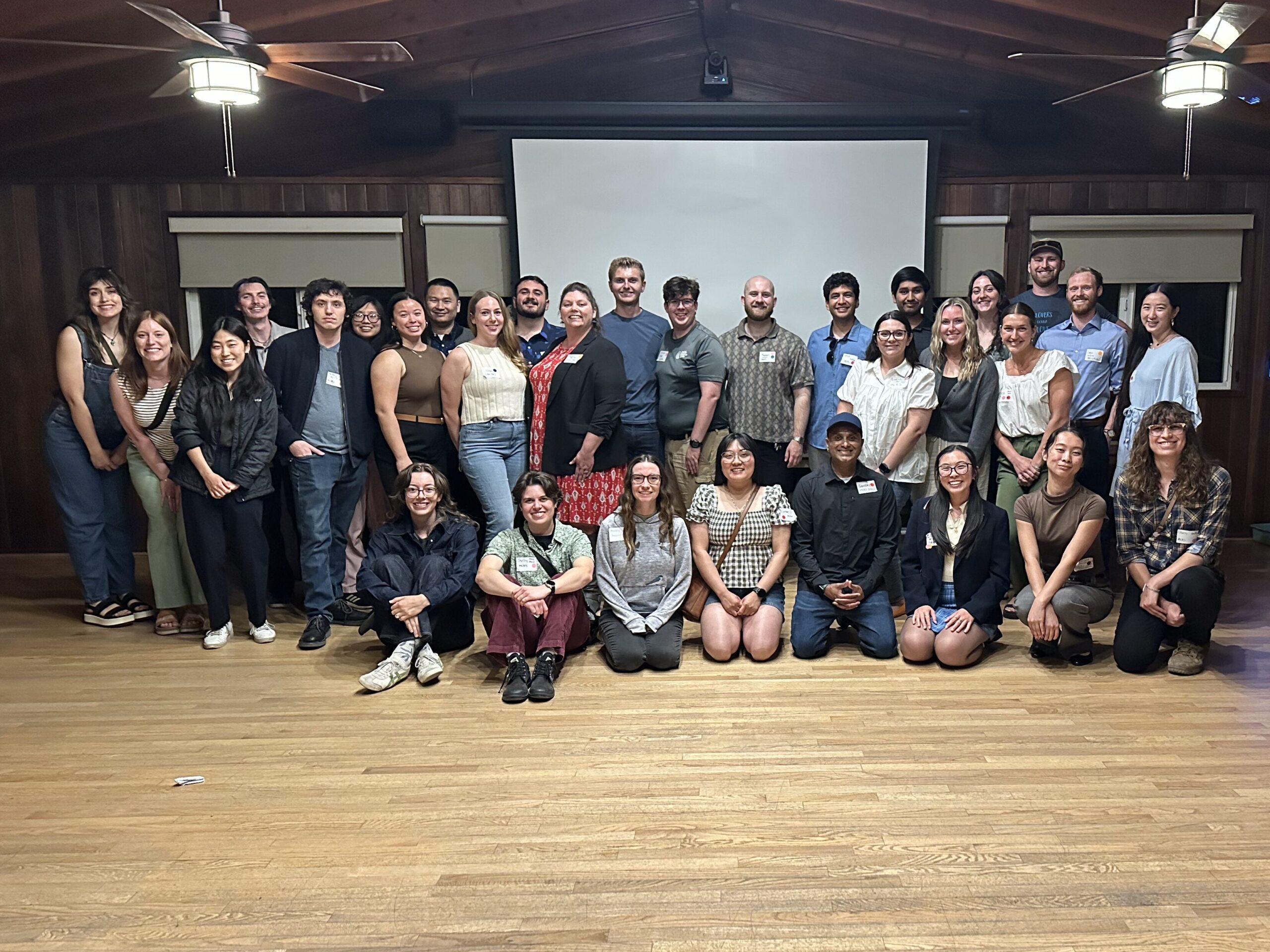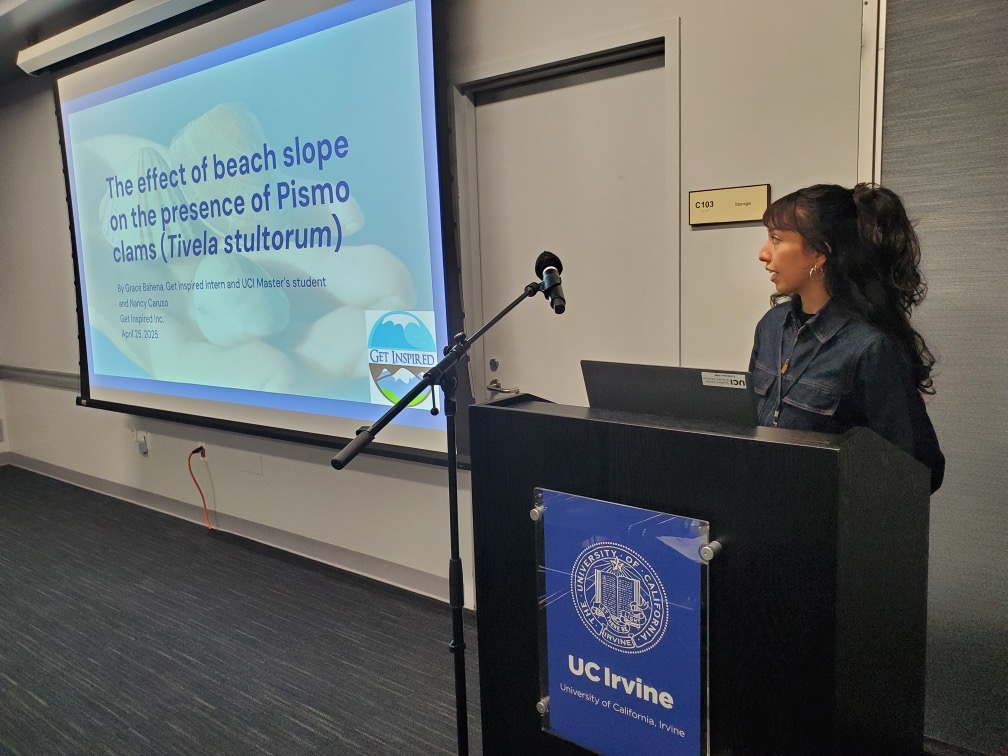Student Blog: Peter Lam
Peter Lam is a 2nd year MCRS student whose goals are to maintain rich biodiversity in environments by protecting and restoring natural resources in the face of a rapidly-changing world.
Treatments to Restore an Ailing Land in a Changing World
To me, restoration means finding ways to heal the land with the end goal of having the land being able to prosper on its own. It feels like a doctor-patient relationship where we strive to diagnose what ails the land and then make decisions to nurse it back to health. We take the land under our care, prescribe treatments until its functions have returned, and then let it go. “The Bowl,” the focus of my team’s capstone project, is a site in Crystal Cove State Park that has been weakened by ranching, agriculture, and invasion of non-native species. This pattern of use has reduced the land’s health by degrading its habitat quality and capacity for biodiversity, making it less supportive of life and aesthetic beauty. I am passionate about habitat restoration and appreciate State Park’s efforts to preserve nature and its resources. Alongside my team members and our project stakeholders, I hope to restore the site in such a way that the land supports a higher number of native species and greater biodiversity to the benefit of everyone and everything.
“The Bowl” is proving difficult to heal. The area is no stranger to habitat restoration. A number of restoration efforts have been attempted in the past with varying amounts of success. And, like everywhere else, the area is afflicted by the effects of climate change. With global temperature increases, we are seeing extended drought periods and scattered rain events in many regions (Ma et al., 2010). Our team has come to the decision to study two treatments in combination to achieve a synergistic effect that we believe will give the land its best chance to recover and stay healthy. We are restoring the area with a mix of native seeds based on different plant species’ ability to withstand the effects of climate change.
In this two-part treatment, restoring the land with a mix of native seeds will help the land recover because it is an excellent way to account for the community dynamics of habitats. The seeds are planted and allowed to grow. These plants grow and compete with one another for space and other resources. One conventional alternative treatment is to use plants that are already grown and plant them onto the land. This offers restorationists direct control over plant placement and species composition. While it would be ideal to have all native species represented, it wouldn’t make sense for us in this capstone project to have such requirements. Communities are dynamic, and some species will perform better than others. A review of various failed restoration efforts identifies the common theme of missing a “community-oriented integrated framework” (Funk et al., 2011). With this treatment, we let the natural order of things play out and allow the land to “tell” us which native species will contribute most to achieving a restored ecosystem. I feel using pre-grown plants versus a mix of native seeds to treat the land is like having two different communication strategies. With pre-grown plants, it is like we are having one-way communication with someone. We have direct control of the plant composition and are effectively “talking at” the land. With a mix of native seeds, it is like we are having two-way communication with someone. We provide flexibility in species options and are effectively “talking with” the land.
Restoring based on plant species’ ability to withstand the effects of climate change will keep the land healthy. Restoration work should always look to the present while considering the future. If we don’t do this, we may be setting up the land for failure against climate change. Typical restoration projects restore by looking at plants that have existed in the area for generations. However, the world is continually changing, and climate change is adding to this pressure of change. Looking only to past species to determine what lands should look like now and into the future is like parents helping their child dress for a school dance based on popular styles back in their day. Dressing their child in outdated 70’s fashion for the dance would certainly not be doing the child any favors. By overlooking today’s fashion trends, these parents may be setting up their child for a failed evening.
Restoration based on plant species’ ability to withstand the effects of climate change can narrow the scope a bit on which native species can be used, but this strategy is still broad enough to allow the land some autonomy. According to Brudvig and Mabry (2008), restoration projects should focus on plant abilities that give the species a higher chance to survive while also benefitting other species. Since this region is experiencing extended drought periods with scattered rain events, we are considering plants that can survive with little water. We are also looking at a few other plant abilities that may give the plants an increased chance to survive against climate change. I like to compare these tests for suitable plant abilities with the familiar fairy tale story, Goldilocks and the Three Bears. As restorationists, we have prepared various “bowls of porridge” for the land whose “tastes” have been influenced by climate change in search for the porridge that is just right.
It will be exciting to see how our prescribed treatments benefit the land. We sincerely hope the treatments will improve the condition of “The Bowl” and give the land the chance it needs to recover. By the end of it all, we hope to better understand the needs of the site and spread this knowledge in the hope that others may also use it to restore in the face of a changing climate.
Citations
Brudvig, L. A., and C. M. Mabry. 2008. Trait-based filtering of the regional species pool to guide understory plant reintroductions in midwestern oak savannas, U.S.A. Restoration Ecology 16: 290-304.
Calflora: Information on California plants for education, research and conservation. [web application]. 2020. Berkeley, California: The Calflora Database [a non-profit organization]. Available: https://www.calflora.org/ (Accessed: Mar 03, 2020).
Cione, N. K., P. E. Padgett, and E. B. Allen. 2002. Restoration of a native shrubland impacted by exotic grasses, frequent fire, and nitrogen deposition in southern California. Restoration Ecology 10: 376-384.
Crystal Cove State Park (CCSP) Project File. 2017 NRD Project Scoping Form. The Resource Agency, California State Parks. 1-34.
Funk, J. L. et al., 2011. Restoration through reassembly: plant traits and invasion resistance. Trends in Ecology and Evolution 23: 695-703.
Gaertner, M. et al., 2009. Impacts of alien plant invasions on species richness in Mediterranean-type ecosystems: a meta-analysis. Progress in Physical Geography 33: 319-338.
Goldstein, L. J., and K. N. Suding. 2014. Intra-annual rainfall regime shifts competitive interactions between coastal sage scrub and invasive grasses. Ecology 95: 425-435.
“Hiking in Crystal Cove State Park.” Crystal Cove State Park. Accessed March 3, 2020. http://www.crystalcovestatepark.org/hiking-2/.
Kimball, S. et al., 2014. Altered water and nitrogen input shifts succession in a southern California coastal sage community. Ecological Application 24: 1390-1404.
Ma, W. et al., 2010. Climate change alters interannual variation of grassland aboveground productivity: evidence from a 22-year measurement series in the inner Mongolian grassland. Journal of Plant Research 123: 509-517.
Stylinski, C. D., and E. B. Allen. 1999. Lack of native species recovery following severe exotic disturbance in southern California shrublands. Journal of Applied Ecology 36: 544-554.
Vila, M. et al., 2003. Association between Opuntia species invasion and changes in land-cover in the Mediterranean region. Global Change Biology 9: 1234-1239.




